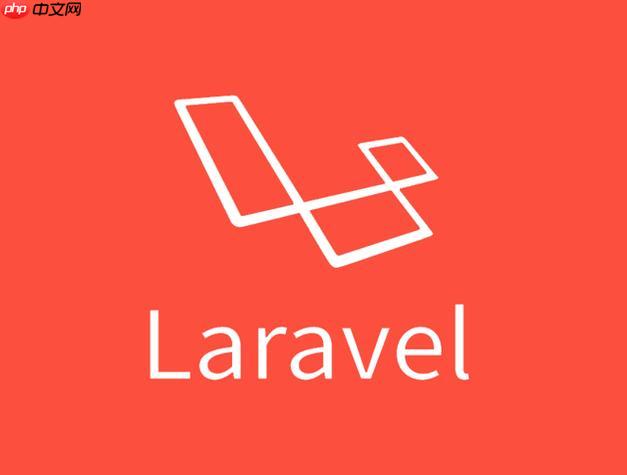Laravel模型关联保存的核心在于理解不同关联类型的数据库操作逻辑,通过Eloquent提供的save()、create()、attach()、sync()等方法,可自动处理外键或中间表,实现关联数据的创建、更新与同步,并建议在多表操作时使用事务保证数据一致性。

Laravel模型关联的保存,其实核心就是理解不同关联类型(一对一、一对多、多对多)背后的数据库操作逻辑。简单来说,就是通过Eloquent提供的各种方法,让框架帮你处理外键的设置或者中间表的维护。无论是创建新的关联记录,还是更新已有的,Laravel都提供了非常直观的API,让你不用直接写SQL就能搞定。
在Laravel中保存关联模型,主要取决于你的关联类型以及你想要执行的操作(创建、更新、同步)。我个人觉得,理解这些方法的适用场景,比死记硬背它们的功能要重要得多。
对于一对一(HasOne/BelongsTo)和一对多(HasMany/BelongsTo)关系:
save()
save()
$user = App\Models\User::find(1); $post = new App\Models\Post(['title' => '我的第一篇文章', 'content' => '内容...']); $user->posts()->save($post); // 自动设置 post 的 user_id
这里,
$user->posts()
HasMany
save()
$post
post
user_id
$user
create()
create()
$user = App\Models\User::find(1);
$post = $user->posts()->create([
'title' => '我的第二篇文章',
'content' => '更多内容...',
]); // 同样自动设置 user_id这两种方法,我通常会根据手头是已有模型实例还是只有数据数组来选择。如果数据来自表单,直接用
create()
saveMany()
createMany()
$user = App\Models\User::find(1);
$comment1 = new App\Models\Comment(['body' => '评论1']);
$comment2 = new App\Models\Comment(['body' => '评论2']);
$user->comments()->saveMany([$comment1, $comment2]); // 保存多个评论并关联
// 或者使用 createMany
$user->comments()->createMany([
['body' => '评论3'],
['body' => '评论4'],
]);associate()
dissociate()
associate()
save()
$user = App\Models\User::find(1); $post = App\Models\Post::find(10); $post->user()->associate($user); // 设置 post 的 user_id $post->save(); // 必须保存 post 才能生效
dissociate()
null
对于多对多(BelongsToMany)关系:
多对多关系涉及到中间表(pivot table),操作起来会稍有不同。
attach()
$user = App\Models\User::find(1);
$roleId = App\Models\Role::where('name', 'admin')->first()->id;
$user->roles()->attach($roleId); // 将用户关联到管理员角色
// 也可以一次性关联多个ID
$user->roles()->attach([$roleId1, $roleId2]);如果你需要在中间表上保存额外数据,
attach()
$user->roles()->attach($roleId, ['expires_at' => now()->addDays(30)]);
detach()
detach()
$user = App\Models\User::find(1);
$roleId = App\Models\Role::where('name', 'admin')->first()->id;
$user->roles()->detach($roleId); // 解除用户与管理员角色的关联
// 不传参数会解除所有关联
$user->roles()->detach();sync()
sync()
$user = App\Models\User::find(1); $newRoleIds = [2, 3, 4]; // 假设用户现在应该拥有 ID 为 2, 3, 4 的角色 $user->roles()->sync($newRoleIds);
sync()
attached
detached
updated
sync()
$user->roles()->sync([
1 => ['expires_at' => now()->addDays(7)], // 角色ID 1
2, // 角色ID 2,无额外数据
]);syncWithoutDetaching()
sync()
$user = App\Models\User::find(1); $user->roles()->syncWithoutDetaching([5, 6]); // 只添加角色 5 和 6,不影响已有角色
updateExistingPivot()
$user = App\Models\User::find(1); $roleId = 1; // 假设用户已经关联了角色 ID 为 1 $user->roles()->updateExistingPivot($roleId, ['expires_at' => now()->addDays(60)]);
在处理Laravel关联模型保存时,确实有些地方新手容易踩坑,甚至老手一不留神也会犯错。我见过最普遍的,就是对
save()
create()
save()
create()
save()
create()
new Model()
另一个常被忽略的点是,如果你在
BelongsTo
associate()
save()
多对多关系中,忘记处理中间表(pivot table)的额外字段也是个常见问题。比如,你的
user_role
user_id
role_id
expires_at
attach($roleId)
expires_at
null
sync()
最后,性能问题。虽然不直接是“保存”的错误,但很多人在保存后立刻尝试加载关联数据时,会遇到 N+1 查询问题。比如你保存了一个用户,然后循环用户的文章去显示,如果没有使用
with()
处理中间表字段,也就是多对多关系中的额外数据,是Laravel关联模型操作的一个亮点,也确实是经常被问到的地方。
最直接、最常用的方式,就是在
attach()
sync()
updateExistingPivot()
以
attach()
User
Role
user_roles
user_roles
assigned_by
$user = App\Models\User::find(1); $roleId = 2; // 假设是 'editor' 角色 $adminUserId = Auth::id(); // 当前操作的管理员ID $user->roles()->attach($roleId, ['assigned_by' => $adminUserId, 'assigned_at' => now()]);
这样,在
user_roles
assigned_by
assigned_at
sync()
$user = App\Models\User::find(1);
$newRoles = [
1 => ['assigned_by' => Auth::id(), 'assigned_at' => now()], // 角色ID 1
3 // 角色ID 3,不提供额外数据,将使用默认值或 null
];
$user->roles()->sync($newRoles);这里,
1
3
1 => [...]
如果你只想更新中间表上某个现有关联的额外字段,而不想改变关联本身,
updateExistingPivot()
$user = App\Models\User::find(1); $roleIdToUpdate = 1; // 假设用户已经关联了角色ID为1 $user->roles()->updateExistingPivot($roleIdToUpdate, ['assigned_by' => Auth::id(), 'notes' => '权限已调整']);
这个方法只会修改
user_roles
user_id
role_id
assigned_by
notes
更高级一点,你甚至可以为你的中间表定义一个模型(称为“枢轴模型”或“Pivot Model”),并通过
using()
attach()
sync()
使用数据库事务,我认为这几乎是处理任何涉及多个相关数据库操作时的“黄金法则”,尤其是在保存关联模型的时候。我的经验是,只要你的一个业务逻辑需要同时修改多张表的数据,并且你希望这些修改要么全部成功,要么全部失败(即保持原子性),那就应该毫不犹豫地使用事务。
举个例子,你正在创建一个订单。这个操作可能不仅仅是向
orders
order_items
products
在这种情况下,你就可以用事务来包裹这些操作:
use Illuminate\Support\Facades\DB;
DB::transaction(function () {
// 1. 创建订单
$order = App\Models\Order::create([
'user_id' => Auth::id(),
'total_amount' => 100.00,
// ... 其他订单数据
]);
// 2. 添加订单项(关联保存)
foreach ($cartItems as $item) {
$order->items()->create([
'product_id' => $item->product_id,
'quantity' => $item->quantity,
'price' => $item->price,
]);
// 3. 更新产品库存 (假设 Product 有一个 decrement 方法)
App\Models\Product::find($item->product_id)->decrement('stock', $item->quantity);
}
// 如果所有操作都成功,事务会自动提交
// 如果其中任何一步抛出异常,整个事务会回滚
});通过
DB::transaction()
transaction
所以,我的建议是:当你面临一个“全有或全无”的场景时,事务就是你的好朋友。它能确保你的数据始终保持逻辑上的一致性,避免那些令人头疼的半成品数据。
以上就是Laravel模型关联保存?关联模型如何保存?的详细内容,更多请关注php中文网其它相关文章!

每个人都需要一台速度更快、更稳定的 PC。随着时间的推移,垃圾文件、旧注册表数据和不必要的后台进程会占用资源并降低性能。幸运的是,许多工具可以让 Windows 保持平稳运行。

Copyright 2014-2025 https://www.php.cn/ All Rights Reserved | php.cn | 湘ICP备2023035733号